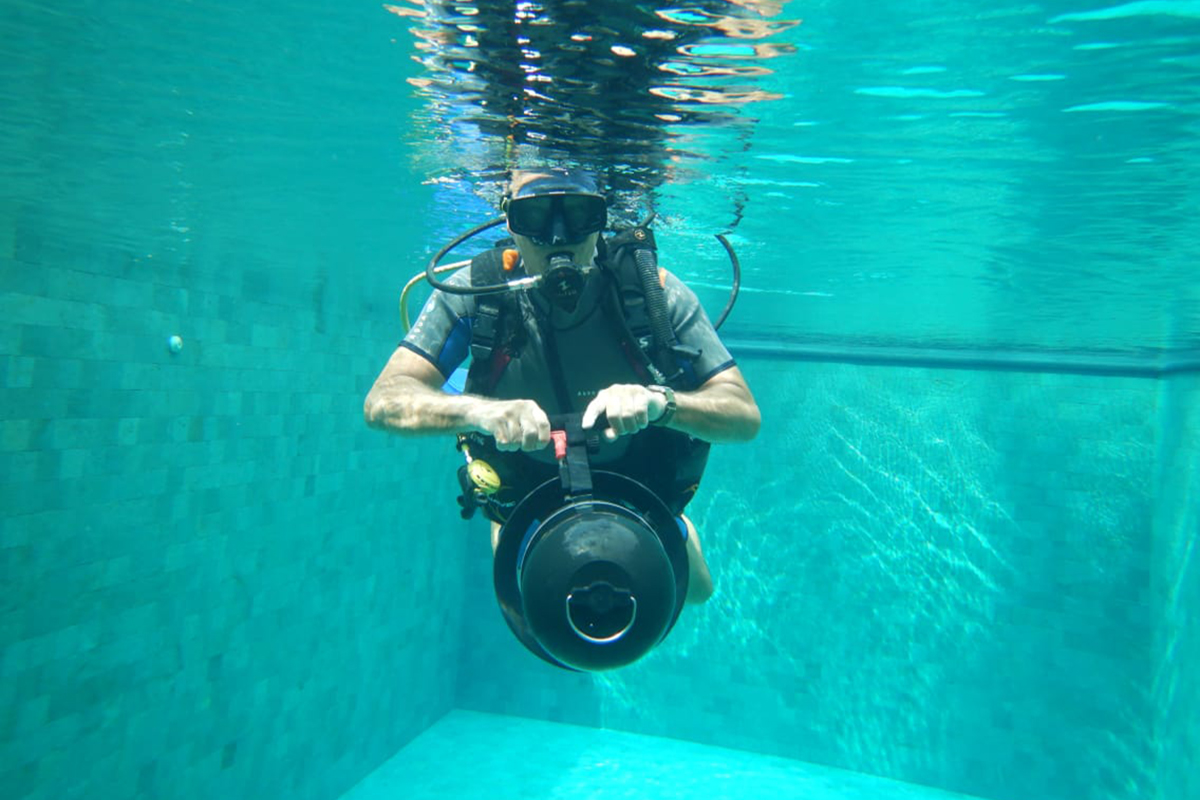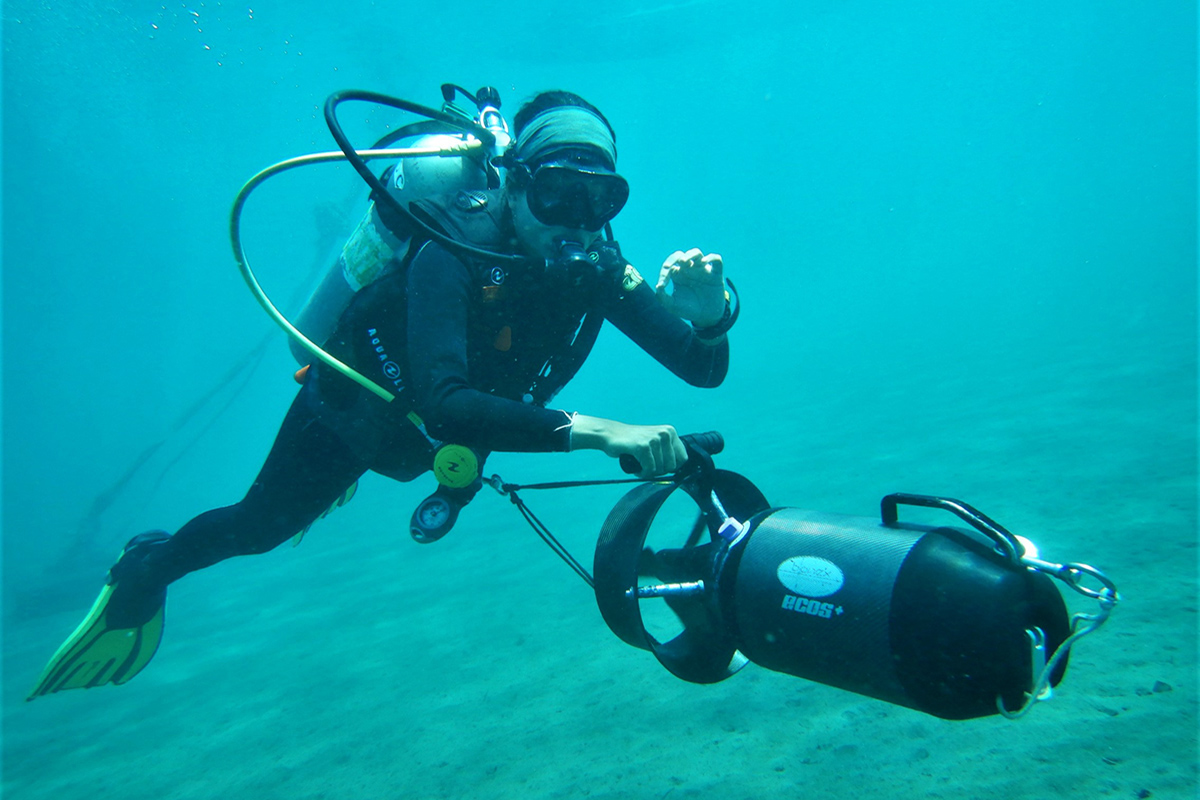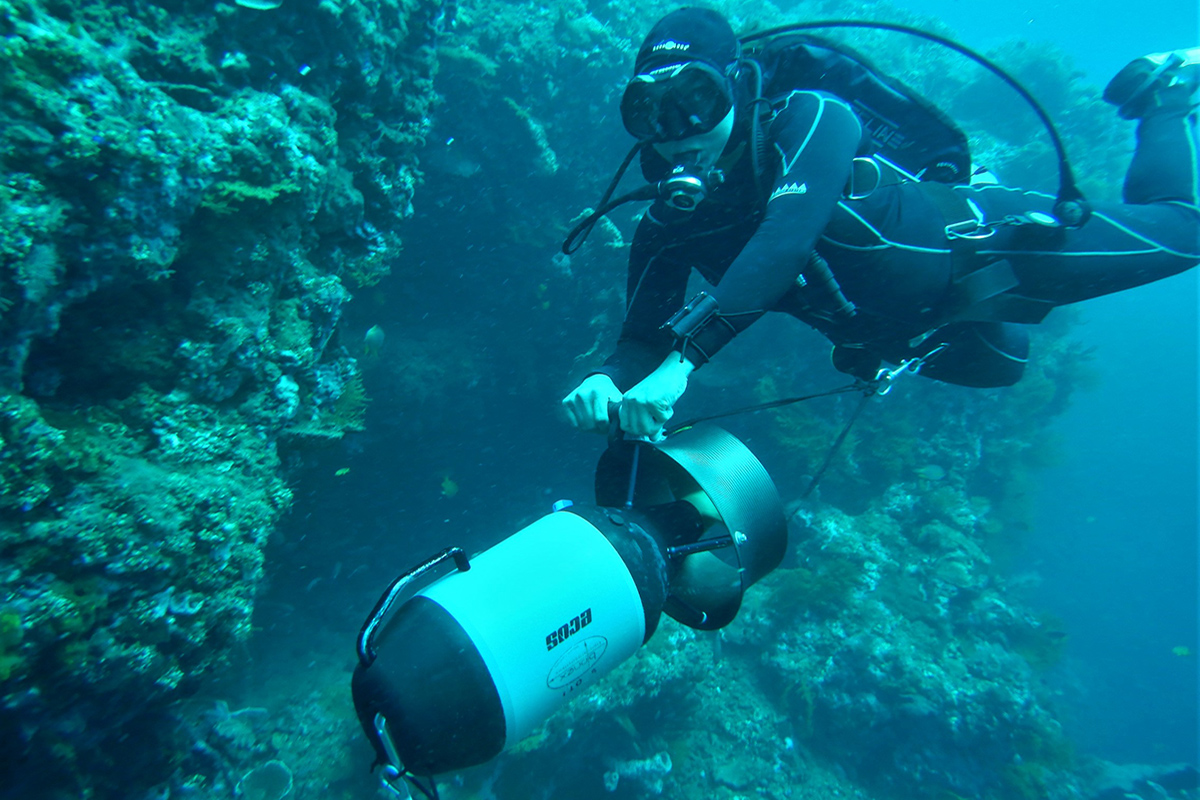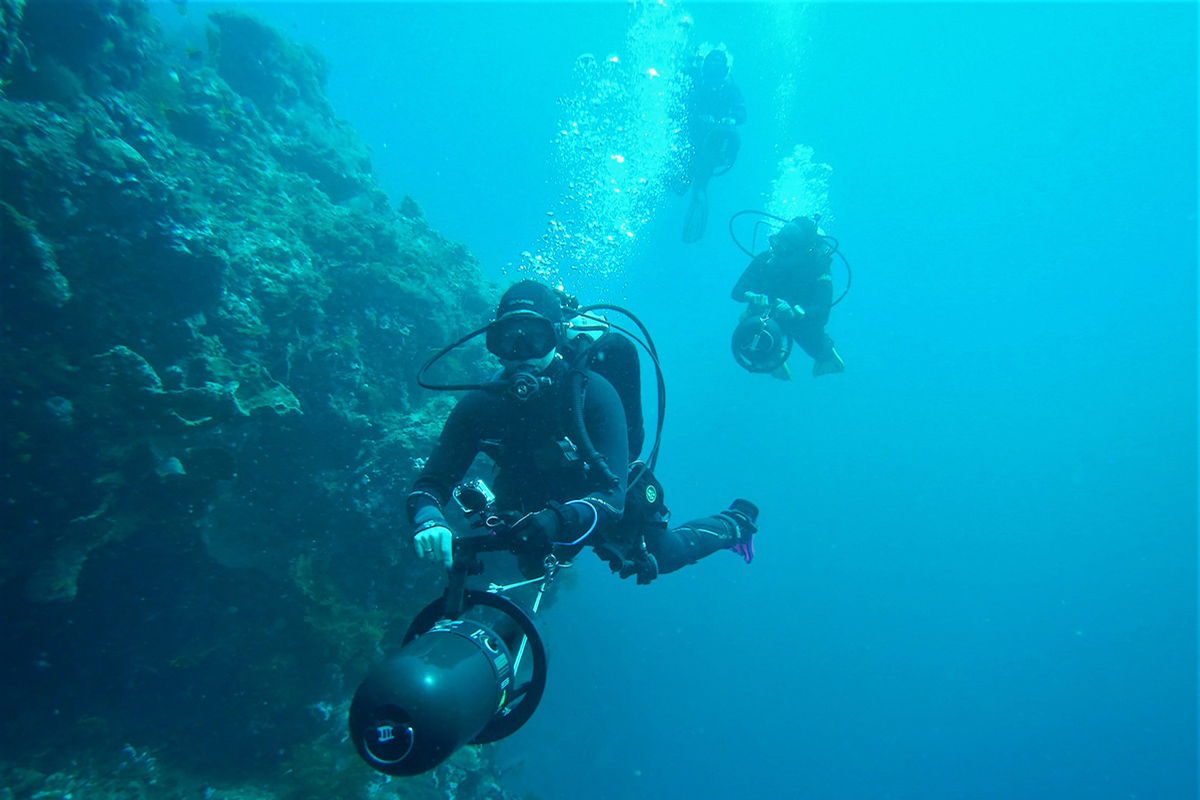See More Sea on a Diver Propulsion Vehicle
Have you ever been on a dive and have to ascend before you’ve seen everything you want to see? On many dives, there is so much ground to cover you may feel like you could never see it all. There is good news though. There is a way to cover more ground and see more in the time you have underwater.
Diver Propulsion Vehicles, or DPVs for short, are lightweight underwater scooters that propel you through the water. DPVs were developed during WWII, but are used more and more for recreational purposes. They are safe, easy to use, and can increase range by almost double during a dive.
DPV Courses
Gangga Divers at Lotus Bungalows offers the PADI Specialty DPV training course. This course is open to divers at least 12 years old with an Open Water Diver certification. The course takes only one day so is easy to fit into even the tightest schedule.
On the course you will learn about operating a DPV with complete control. It can take a little effort to learn about monitoring depth and buoyancy, breathing gas and navigating all whilst moving more quickly than usual.
When moving at higher speeds underwater, you will need to learn to maneuver faster and be very aware of your surroundings. It is imperative to stay in control by learning to adjust your speed and depth. A diver that loses control of their DPV risks damaging the marine habitat, injuring himself or other divers, and even decompression sickness.
The downside of DPVs
There are of course a few limitations of DPVs. Traveling speed underwater, through small spaces, or where there is low visibility, can be problematic. Accidents do happen when diving, and using a DPV can make them slightly more likely. This is why a PADI DPV course is essential.
If you are a keen underwater photographer, using a DPV may not be for you. It can be much more difficult to handle photographic gear in conjunction with a DPV and you may miss certain species of marine life if you are moving at faster speeds than normal.
Lastly, divers often complain of being colder when using a DPV. When you aren’t propelling yourself, you expend less energy and therefore don’t stay as warm. This isn’t much of an issue in the warm waters around Bali, but it’s good to be aware of it if you dive in colder waters.
Taking a DPV course
If you’d like to cover more ground and expend less energy underwater, the PADI DPV Course is a great option for you. The waters around Candidasa, where Gangga Divers at Lotus Bungalows is located, are excellent for taking a DPV course. There are plenty of great reefs to scoot over and test your newly acquired skills. You can also combine this course with other PADI courses offered there. If you’d like to find out what other PADI courses are offered at Gangga Divers, click here Diving Courses at Lotus Bungalows.
Does a DPV course sound good to you? Or perhaps you’ve already taken a course. We’d love to hear about your experiences in the comments box below.




